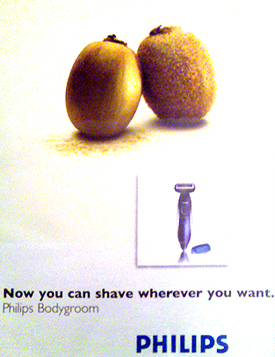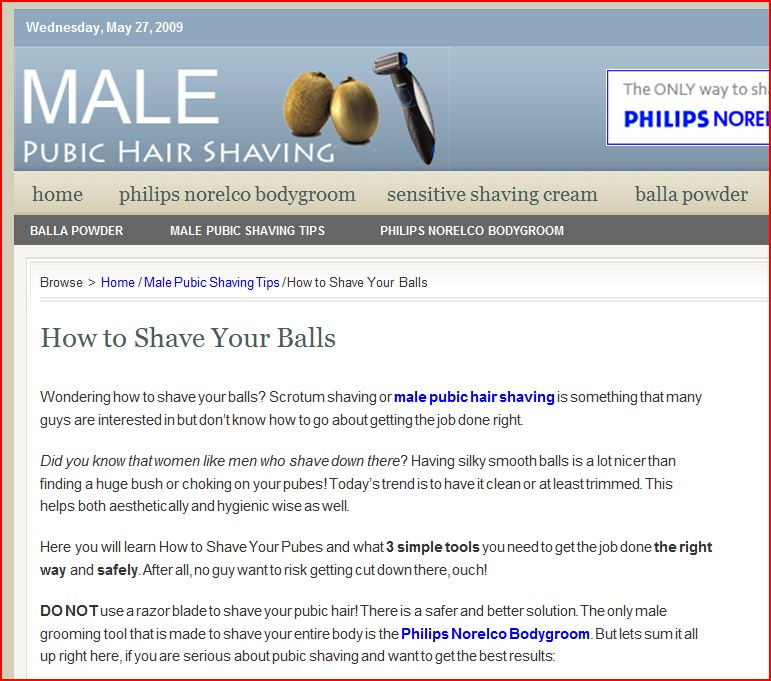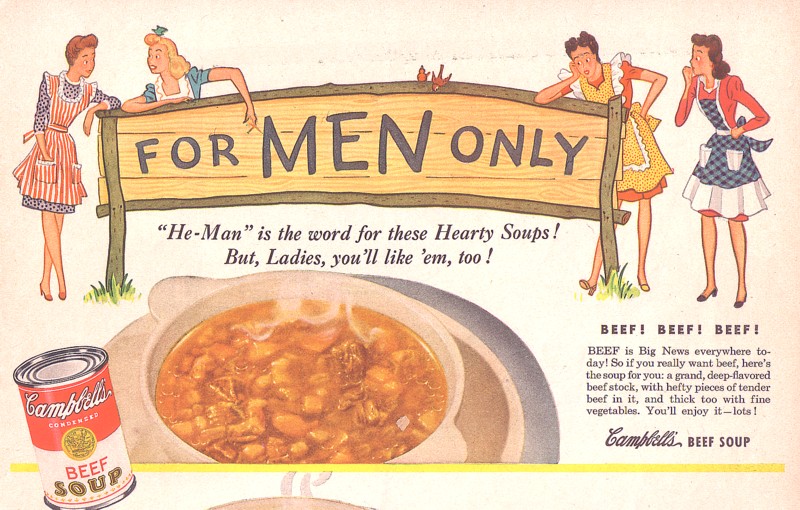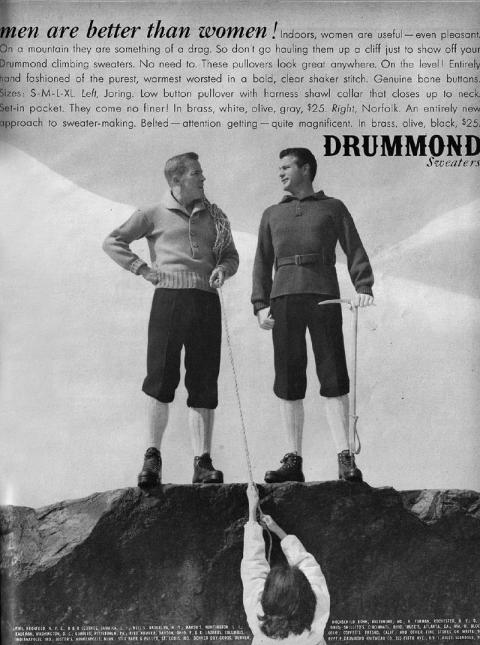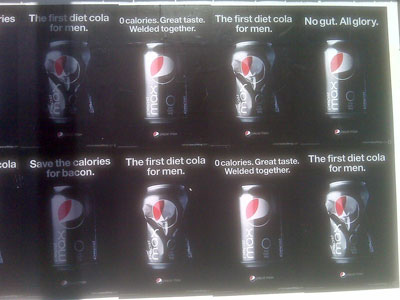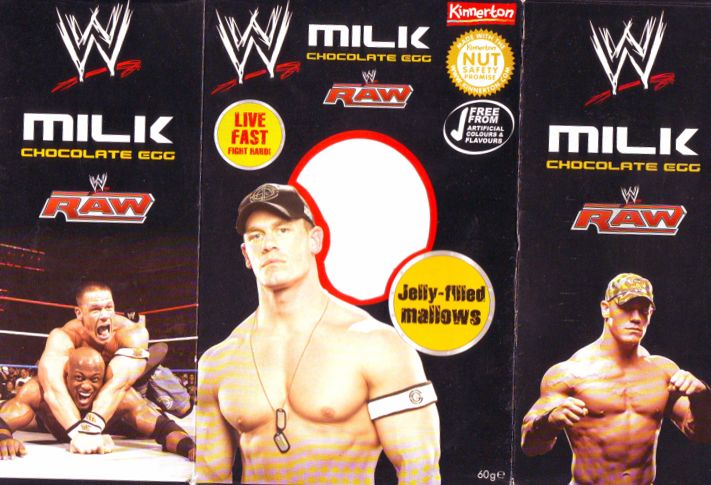The following is a print ad from those one-trick ponies over at Axe Body Spray in an ongoing effort to market shower products to men.
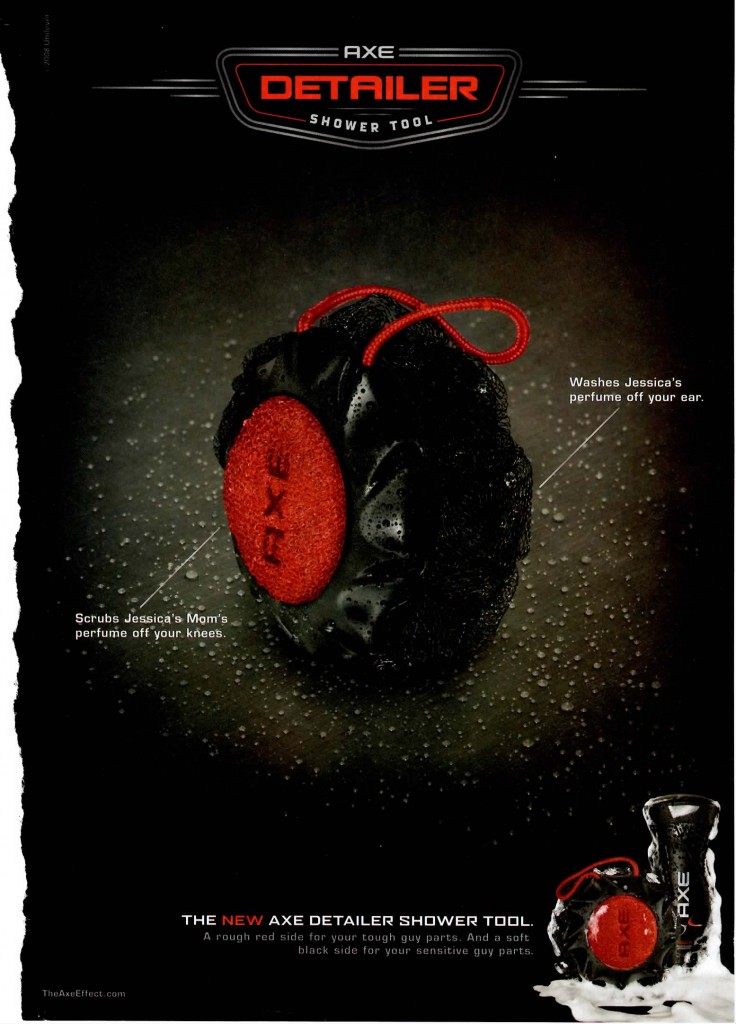
The text pointing to the black part of the “Axe Detailer Shower Tool” (the name of which is worth a post all by itself) says:
“Washes Jessica’s perfume off your ear.”
The text pointing to the red part of the “Tool” says:
“Scrubs Jessica’s Mom’s perfume off your knees.”
I guess the take-home message is that you can exfoliate, but still be masculine enough to have a creepy three-way sexual relationship with women who are related to each other by blood.
By the way, what’s up with that? The heterosexual male fantasy of being sexually serviced by two women is so common as to have become a cliché, but what about the less-frequently endorsed but still prevalent fantasy about those women being sisters (or better yet, identical twins!) or a mother-daughter pair? Is it simple attraction (i.e., if you’re attracted to one woman in a family, it’s likely you’ll be attracted to other women who look/act like her)? Is it the taboo element? Or does the power to coerce women into an incestuous situation serve as its own reward?
Still, Axe got one thing right with this product. When I think about a guy who would buy this sponge in the hopes of securing sexual relations with a woman and her mother, I can’t help but think of him as a, well…tool.





